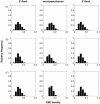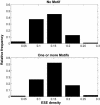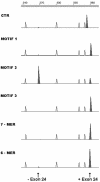Silencer elements as possible inhibitors of pseudoexon splicing
- PMID: 15034146
- PMCID: PMC390338
- DOI: 10.1093/nar/gkh341
Silencer elements as possible inhibitors of pseudoexon splicing
Abstract
Human pre-mRNAs contain a definite number of exons and several pseudoexons which are located within intronic regions. We applied a computational approach to address the question of how pseudoexons are neglected in favor of exons and to possibly identify sequence elements preventing pseudoexon splicing. A search for possible splicing silencers was carried out on a pseudoexon selection that resembled exons in terms of splice site strength and exon splicing enhancer (ESE) representation; three motifs were retrieved through hexamer composition comparisons. One of these functions as a powerful silencer in transfection-based splicing assays and matches a previously identified silencer sequence with hnRNP H binding ability. The other two motifs are novel and failed to induce skipping of a constitutive exon, indicating that they might act as weak repressors or in synergy with other unidentified elements. All three motifs are enriched in pseudoexons compared with intronic regions and display higher frequencies in intronless gene-coding sequences compared with exons. We consider that a subpopulation of pseudoexons might rely on negative regulators for splicing repression; this hypothesis, if experimentally verified, might improve our understanding of exonic splicing regulatory sequences and provide the identification of a novel mutation target for human genetic diseases.
Figures






References
-
- Maniatis T. and Tasic,B. (2002) Alternative pre-mRNA splicing and proteome expansion in metazoans. Nature, 418, 236–243. - PubMed
-
- Senapathy P., Shapiro,M.B. and Harris,N.L. (1990) Splice junctions, branch point sites and exons: sequence statistics, identification and applications to genome project. Methods Enzymol., 183, 252–278. - PubMed
-
- Manley J.L. and Tacke,R. (1996) SR proteins and splicing control. Genes Dev., 10, 1569–1579. - PubMed
MeSH terms
LinkOut - more resources
Full Text Sources
Other Literature Sources

